تصلب التعريفي
Views
- Intro: تصلب "تصلب التعريفي" التعريفي هو عملية تصلب الفولاذ بتدفئة عليه. يتم ذلك عن طريق حقل مغناطيسي تناوب إلى درجة حرارة فوق أو داخل مجموعة
Induction hardening is the process of hardening steel by heating it. It is done by an alternating magnetic field to a temperature above or within a specific transformation range. It is straight away followed by quenching. This procedure of hardening can be specifically applied to both full as well as surface hardening methods. This is the kind of heat treatment process in which the metal part is heated and later it is quenched. The metal which is quenched further undergoes a martensitic transformation in order to enhance the hardness and brittleness of the specific part. Principal Techniques:This hardening process can be performed mainly by two procedures:Traverse HardeningSingle-shot HardeningIn the traverse hardening systems, the work piece to be worked on is repeatedly passed through the induction coil and a quenching spray is being used. It is majorly used in the production of some shaft type components including steering components, drive shafts and power tool shafts etc. The quench ring that is being used can also be an integral component. This method is also applicable in the production of edge components such as: hacksaw blades, leather knives, paper knives and lawnmower bottom blades.In the single-shot hardening method the component which is to be treated is held statically or is rotated inside the coil in which the complete area is being heated for a particular time which is pre-set. This method is generally used for edge hardening of complex shaped tools, flat face hardening of hammers and for the production of small gears. Requirements for Induction Hardening:As far as this heating procedure is concerned, three things which are majorly required for this process to occur are as follows:1.A high frequency electrical power source2.A work coil to generate the alternating magnetic field3.An electrically conductive work piece which is to be heatedBefore this heat treatment process is performed, it is necessary to make a note of the chemistry of the metal, the adjustment of the temperature of the metal and last but not the least the characteristics of the metal. Tips for Successful Induction Hardening of Steels:The selection of steel plays a vital role in this heat treatment process. Steel parts are mainly hardened to get hold of some specific properties such as wear resistance, tensile and fatigue strength. Moreover, it can either be done on a specific part of the work piece or throughout the entire part. The procedure involves heating the work piece to a temperature which is higher than the austenitizing temperature and then the steel is allowed to cool at a rate which is fast enough to transform it to fully martensitic structure. These hardening service providers must have a license which states that these are authorized to perform the different types of heating treatments and the company or the service provider must use the right equipments and procedures for hardening.
We are blessed with a number of improved and useful devices and systems that have changed our life. From health, education, communication to entertainment, science and technology has touched every area. Health industry is witnessing a lot of improvements as a result of the introduction of scientific interference. Now, it has become easy to treat some of the problems that doctors could not handle in the past. The process of induction hardening is almost similar to any other heat treating operations. It is mainly performed to harden parts. The procedure is dependent on various factors to be successful, adjusting the temperature of the material, the general ability and chemistry of the material to harden, proper cooling of the material so that the transformation of the martensite can occur. When one or more than one of these critical characteristics are not present, the material may remain soft entirely or it may end with soft spots. So, it is very essential to check whether all these factors are present or not. Most of these factors help in quenching and heating of the parts. There are different types of heat treatment processes, including Annealing, Ageing, Hardening, Induction Annealing, Carbonitriding, Case Hardening, Carburising, Induction Hardening, Stress Relieving, Shot Blasting, Shot Blasting, Normalising and Tempering to materials like Cast Irons, Alloy Steels, Stainless Steels, Die Steels, Tool Steels, Carbon steels etc. Ageing is the process that causes structural change. It may occur in certain alloys and certain metals at atmospheric temperature or at higher temperatures (also called as artificial ageing). As a result of ageing, the hardness value and maximum stress are increased. You should make it sure that there is some reduction in ductility. Artificial ageing is a process in which the ageing is created by heating at high temperature. It results in precipitation hardening. It is one of the best heat treatment processes. It is quite essential to adjust the temperature of the material so that the austenitic phase can occur. In certain cases, based on the material, it may be essential to hold the temperature for a certain amount of time. It is done to allow the material to avoid undesirable by-products and also allow to fully transforming. There are many other types of heat treating operations that are used. Annealing, Carbonitriding are two of the popular heat treating processes. Annealing is a process in which steel is heated and then the temperature is adjusted properly. Then the cooling is done at a suitable rate, with machinability, with the object of improving softness, of obtaining a desired structure and of removing stresses and cold working properties. Generally the steel is heated to a certain temperature at which carbide is partly or fully taken into solution.
Induction hardening is a very widely used industrial process for the surface hardening of steel. The steel components to be hardened are heated by means of an alternating magnetic field to a temperature within or above their transformation range. This heating process is then reversed by immediate quenching or rapidly cooling down the metal components to room temperature. Just as with case hardening or face hardening the core of the metal, the component remains unaffected by the treatment and its physical properties and advantages are unaffected too. But it is now sheathed in a much harder alloy that has a higher carbon content.The process requires a source of high frequency electricity that is used to drive a large alternating current through a coil. The passage of current through this coil generates a very intense magnetic field that is rapidly changing in its polarity in the space within the coil. The metal component that is to be hardened is inserted into this rapidly alternating magnetic field and the current generated within the object itself rapidly heats it up. This hardening results in a layer of a highly wear resistant alloy around the component. This makes these sort of metal pieces used widely in automotive and industrial applications where long life and wear resistance are required.There are two primary types of hardening. Single shot or static hardening is the process where the component is contained within the coil in its entirety and either held static or rotated. The hardening effect is achieved all over the surface of the object simultaneously. The advantage is a quicker process due to the fact that the entire component is being treated in one go itself. The quenching process or the cooling down is also done at one go for the entire component. The drawback is the higher power requirement of the induction coil required for the hardening process. Traverse hardening is the other type of induction hardening process widely used for long components like axle shafts and steering columns for automotive applications. The induction is actually done by a ring type inductor that creates a band of heat that needs to be moved along the length of the componenت. عملية تبريد يتم أيضا بطريقة مماثلة. الميزة هي أن طاقة أقل من المطلوب وقبل متفاوتة سرعة الطوق تصلب متغير قابل للتحقيق. والعيب في الوقت إضافية اتخذت كل مكون.
ومع تطور العلم والتكنولوجيا، أدخلت عددا من نظم وأجهزة مبتكرة ومحسنة. من الترفيه، والصحة، والاتصالات السفر، شهدت الساحة كل تغيير. هذا النمو السريع قد أيضا يؤدي إلى الأخذ بتصلب التعريفي، أسلوب تدفئة فعالة ومفيدة. عموما يتم تصلب التعريفي تتصلب الأجزاء المعدنية. ومع ذلك، هناك بعض العوامل التي تلعب دوراً كبيرا في جعل هذا تدفئة معالجة ناجحة. الأساسية في أن يحيط علما بالكيمياء هذا المعدن، تعديل درجة حرارة المعدن حيث أنه يمكن أن تحدث المرحلة اﻷوستنيتي، خصائص المعادن، فضلا عن قدرتها على تبريد سريع جداً. كل ما ورد أعلاه المذكورة العوامل الأساسية لهذه العملية تصلب. إذا كان أي من هذه العوامل غير موجودة, قد لا تتصلب المعدن أو قد تحدث بقع لينة على المعدن. هذه الميزات الهامة أو عوامل لها سيطرة كبيرة على التدفئة أو تبريد المعدن. ومع ذلك، ليس فقط الحث تصلب الداخلي الذي يساعد في تدفئة معالجة المعادن. وهناك أيضا أنواع أخرى من تدفئة أساليب مثل الصلب، وتصلب، وتلطيف، كاربونيتريدينج، إدخال انلينغ، تخفيف، التماثل، حالة تصلب، النار التفجير، تطبيع، إلخ تخفيف الإجهاد على مواد مثل الحديد الزهر، الكربوني، ويموت الفولاذ وسبائك الفولاذ، وأداة الفولاذ والفولاذ المقاوم للصدأ. تسقيه جزء مهم جداً من أجل الحصول على الصلابة المطلوبة للمعادن. تبريد غير سليمة قد تؤدي إلى مجموعة متنوعة من المشاكل. قد يتسبب استخدام كوينتشانت خاطئ لمعدن محددة عملية تبريد لتصبح بطيئة. لذا، من المهم للتحقق من ما إذا كان يتم استخدام المبلغ الصحيح ووافرة من كوينتشانت لإزالة الحرارة أم لا. بوليمر يستخدم في الغالب من كوينتشانتس المستندة إلى الماء. استخدام تكنولوجيا المعلومات أساسا يبطئ عملية التبريد ويمنع حدوث شروخ. ومع ذلك، بما في ذلك الكثير من البوليمر ليست فكرة حكيمة. هذا مركب كيميائي قد خفض الحرارة إزالة القدرة ويسبب هذا المعدن تبقى لينة. أيضا التحقق من ما إذا كان يتم تبريد هذا البند بشكل صحيح أو لا أو آخر الحرارة المتبقية سيتم التلاعب المعدن. يتم استخدام الاستقراء تصلب العملية أساسا لسبائك الصلب. هذا العلاج تدفئة أساسا يهدف إلى تحسين حياة السلوك والمتانة والتعب يرتدي المعادن والسبائك، التي عادة ما تستخدم لجعل الينابيع والتروس ومهاوي. أنها فقط المنظمات المهنية في مجال المعالجة الحرارية له الكمال بإعداد وحق المعرفة لهذا العرض. وإليك بعض النصائح التي سوف تساعدك على معرفة خبير في خدمة المعالجة بالحرارة. تصلب يجب المرخصة مزود الخدمة وأذن لإجراء أنواع مختلفة من التدفئة العلاجات. يجب أن توفر الشركة يمكنك أن تختار نوعية الخدمات. وبالتالي، من المهم التعرف على السجلات السابقة للشركة فيما يتعلق بمعاملة تدفئة. معرفة ما إذا كانت تستخدم الشركة معدات الحق لتصلّب. أيضا، أن تأخذ في الاعتبار تجربة شركة "أيهم التعريفي التدفئة" في تقديم خدمات فعالة وآمنة من تصلب المعدن. ومع ذلك، دائماً مقارنة أسعار مقدمي الخدمات المختلفة في هذه الصناعة في حين العثور على أفضل صفقة على الإنترنت.
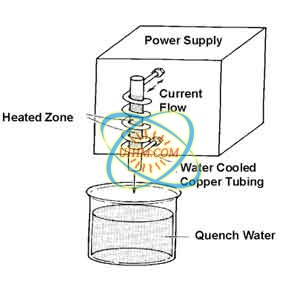
التعريفي يقسي
Tags: تصلب التعريفي

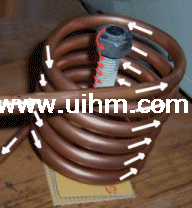
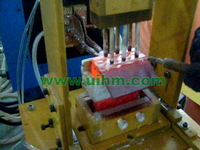
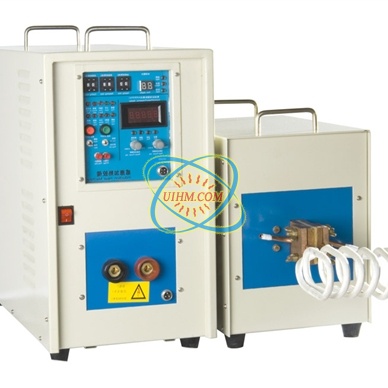
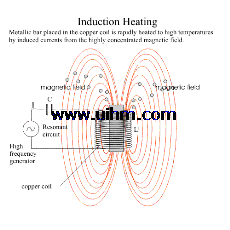
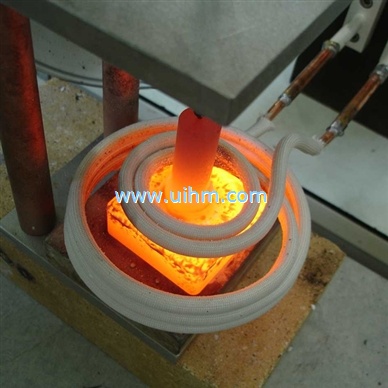
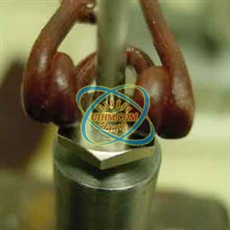
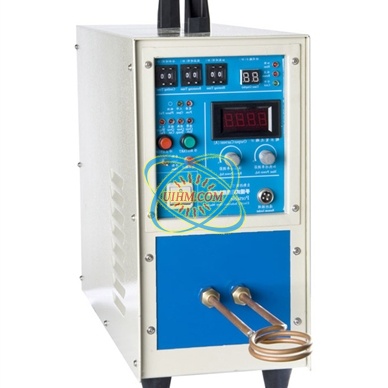
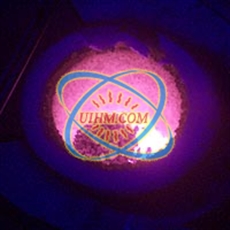

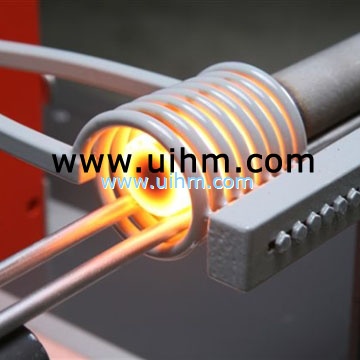
Newest Comment
No Comment
Post Comment